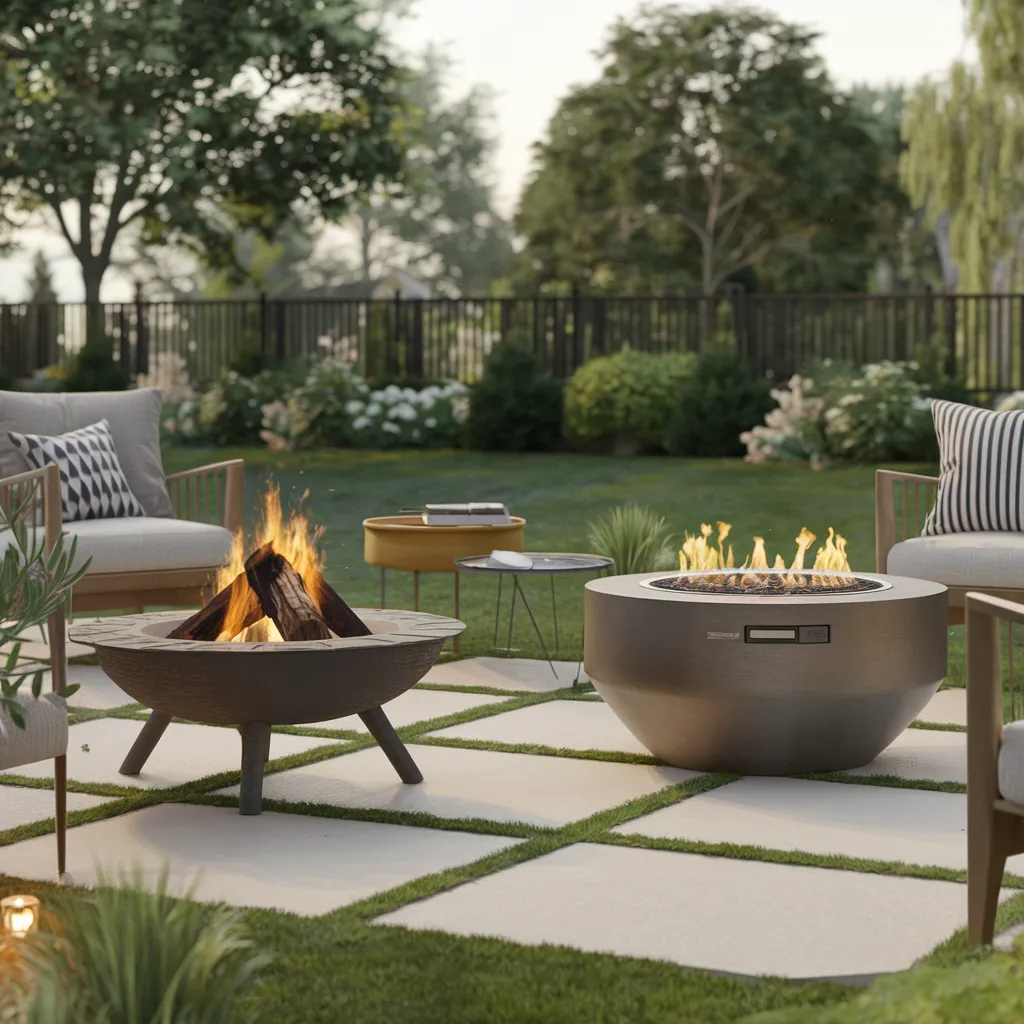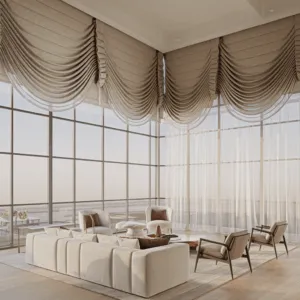A well-designed firepit can be the centerpiece of your outdoor living space, providing warmth, ambiance, and a cozy gathering spot for friends and family. However, there are a few common mistakes that can turn your firepit into a safety hazard or an eyesore. From fuel selection to placement and materials, we’ll explore the key considerations to ensure your firepit enhances your garden’s appeal.
The Fuel Dilemma: Gas vs. Wood – What’s Right for Your Garden?
One of the first decisions you’ll face is choosing between a gas or wood-burning firepit. Both options have their pros and cons. In urban environments, a gas firepit is often the more practical choice, eliminating the risk of smoke and potential fire hazards near buildings. However, in spacious, rural settings, a traditional wood-burning firepit can provide a more authentic and cozy experience. It’s important to note that wood-burning firepits can increase the risk of wildfires in drought-prone areas, while gas firepits are generally safer in dry conditions. On the flip side, gas firepits can be costly to run and install, especially if requiring a mains gas connection. Consider your location, budget, and personal preferences when making this crucial decision.
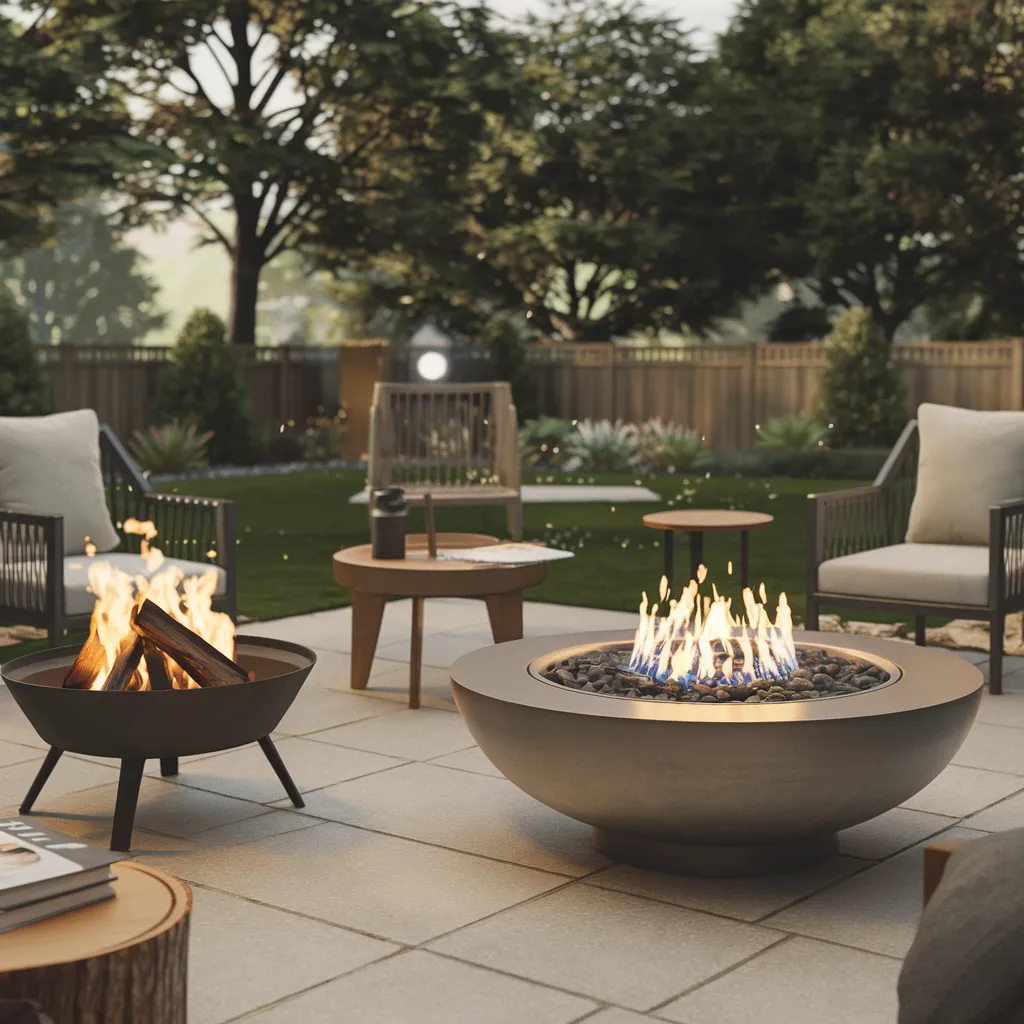
A minimalist yet striking arrangement, this dual firepit layout features one elevated bowl with a blue-glass fire feature and another wood-burning model with tripod legs. The juxtaposition underscores functionality and visual variety. A contemporary palette of charcoal, taupe, and soft beige keeps the look grounded while enhancing the fire’s visual drama.
Firepit Placement: Avoiding Hazards and Maximizing Ambiance
Proper placement is crucial for both safety and aesthetics. Firepits are sometimes positioned in spots that may look appealing but are impractical or even hazardous. Avoid tucking your firepit in a far corner or under a garden canopy, as these locations can restrict airflow and increase fire risks. Similarly, placing a firepit too close to your home or other structures can be a fire hazard. For wood-burning pits, maintain a clearance of 15-20 feet from trees, buildings, and other combustible materials. Gas firepits offer more flexibility in placement, but access and sightlines still matter. Consider the flow of foot traffic and ensure your firepit is visible and accessible from multiple vantage points in your outdoor living area.
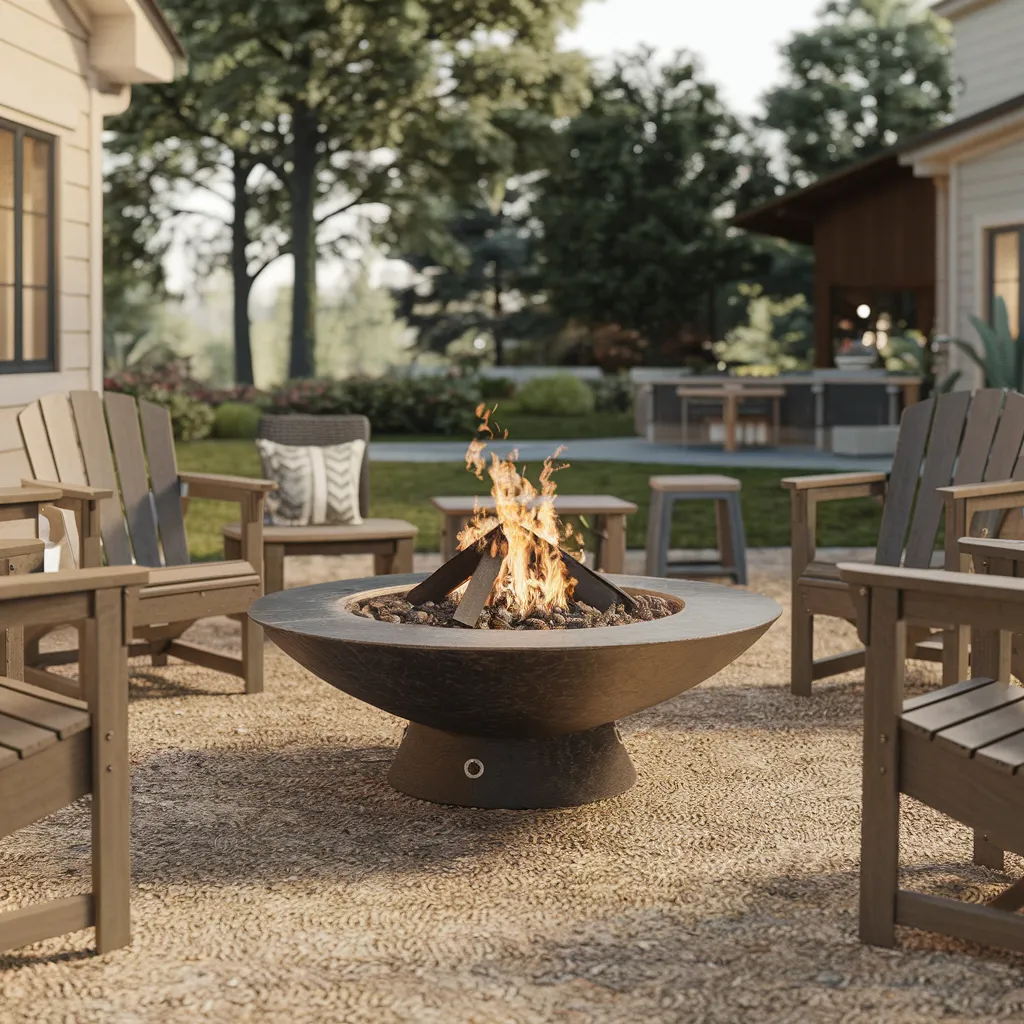
With a modern sculptural base and a broad, low-set bowl, this firepit exemplifies contemporary outdoor design. Surrounded by Adirondack-style seating in a deep wood finish, the setup encourages social gatherings while maintaining a clean, uncluttered aesthetic. The muted earth tones of the gravel and chairs contrast beautifully with the glowing flame, emphasizing warmth and simplicity.
Invest Wisely: Why Skimping on Your Firepit Could Cost You
While it may be tempting to opt for a budget firepit, cutting corners on quality can have serious consequences. Cheap firepits are often made with inferior materials that can fall apart, rust through the bottom, or burn holes through the spark screen, creating safety hazards. Investing in a quality firepit from a trusted supplier may cost more upfront, but it will ensure longevity and safety. A well-constructed, luxury firepit design may seem expensive, but it should last over 10 years with proper care and maintenance. Remember, your firepit is a long-term investment in your outdoor living space, and skimping on quality could end up costing you more in the long run.
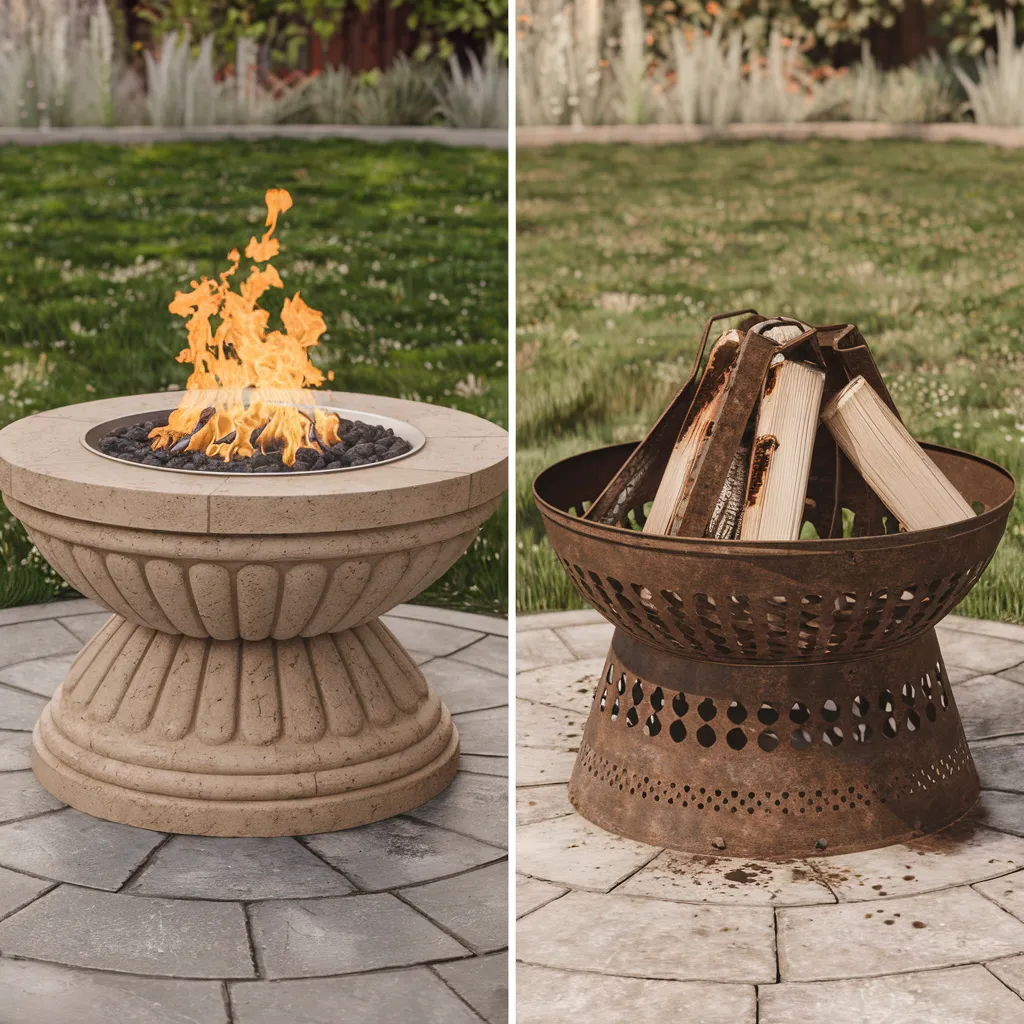
Two contrasting firepit styles are showcased here: a sculptural pedestal firepit with fluted detailing in a soft beige finish, and a perforated steel bowl with a weathered patina. The pairing highlights the impact of material and shape when selecting a fire feature. Both sit atop a radial paver design, emphasizing symmetry and creating a strong visual anchor in the landscape.
Protecting Your Patio: Heat-Resistant Materials for Safe Firepits
When installing a firepit, it’s crucial to consider the materials surrounding it. Some hardscaping materials, such as wooden decking, cannot withstand high temperatures and may become scorched or even catch fire if placed too close to the firepit. To ensure safety and protect your outdoor living space, opt for fire-resistant materials like fire brick, concrete, or stone near the firepit. These materials can withstand the heat and prevent any potential damage. Additionally, be mindful of the clearance between your firepit and any combustible materials, following the manufacturer’s recommendations or local fire codes.
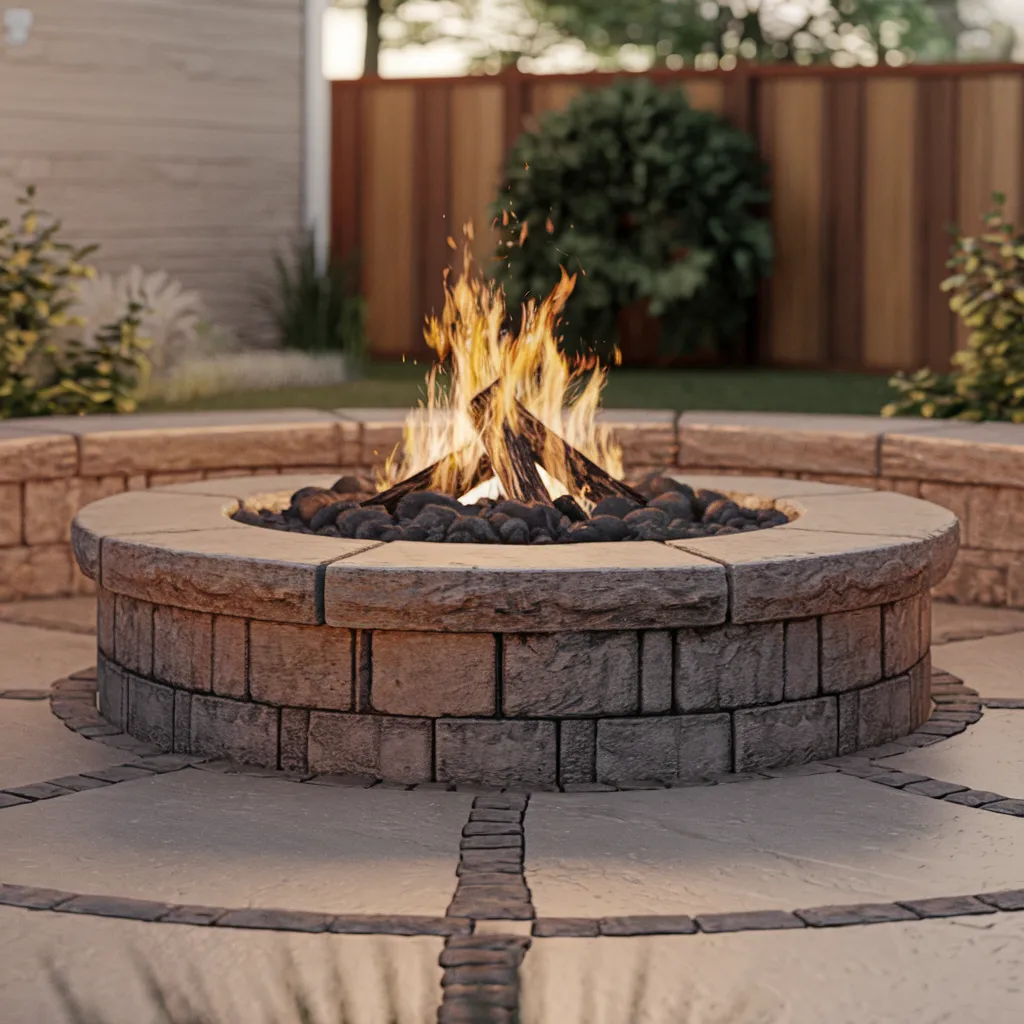
A classic circular firepit built from rustic concrete pavers adds a timeless focal point to this cozy backyard retreat. The stonework and natural textures lean into a traditional design aesthetic, making it ideal for casual evenings under the stars. Warm earthy tones in the stone and surrounding landscaping enhance the organic, lived-in feel of the space.
Size Matters: Finding the Perfect Firepit for Your Outdoor Space
When selecting a firepit, size is an important consideration. A massive brazier may overpower a small garden, leaving little space for safe seating and movement around the fire. Conversely, a tiny firepit can feel cramped and underwhelming when surrounded by too many people. Take into account the size of your garden and seating area, as well as the intended use of the firepit. If you plan to host large gatherings, a larger firepit may be necessary to provide adequate warmth and ambiance. For intimate settings, a smaller, more compact design could be the perfect fit. Remember, the goal is to create a cozy and inviting atmosphere without compromising safety or functionality.
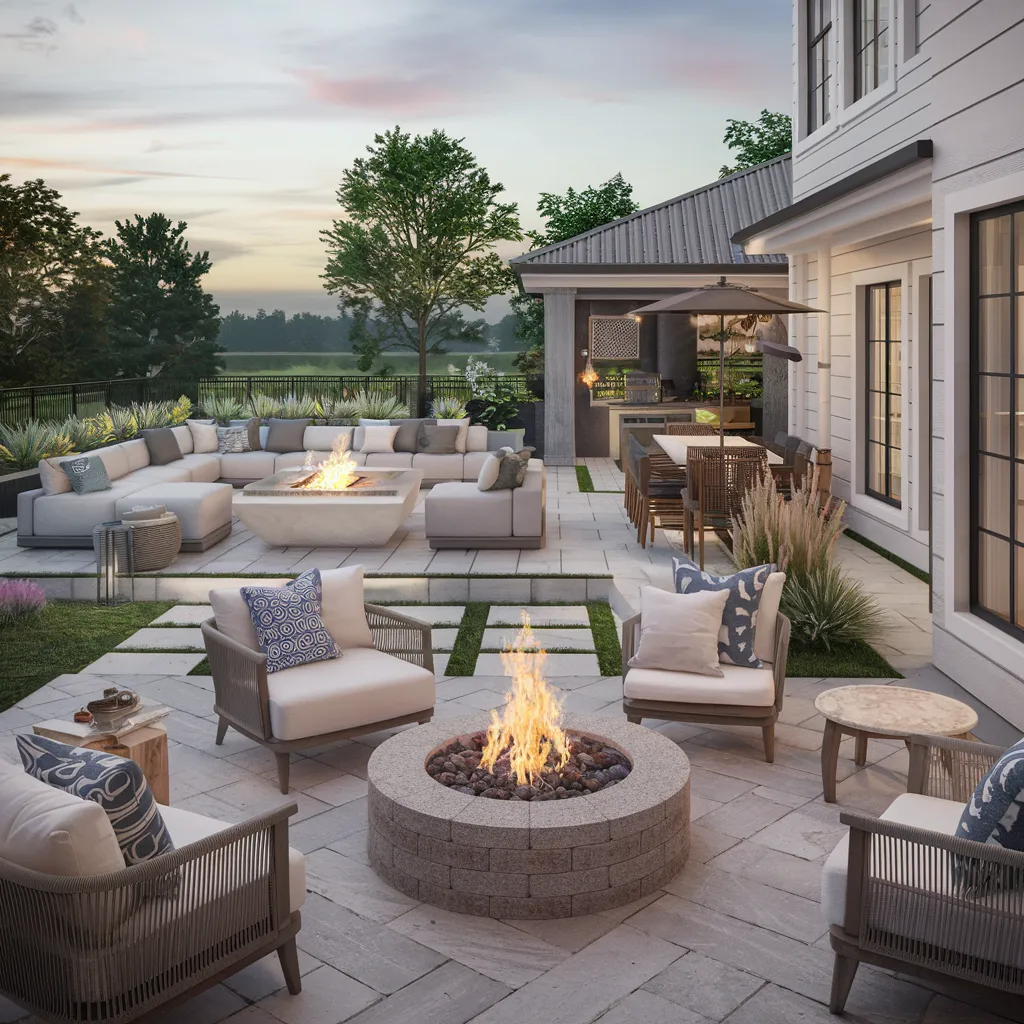
This expansive outdoor living space blends transitional design with resort-style elegance, featuring multiple conversation areas anchored by sleek fire features. The design pairs plush modular seating and natural wood accents with clean architectural lines. A neutral palette of soft grays and taupes is elevated with hints of navy and ivory in the cushions, creating a polished yet welcoming ambiance perfect for extended entertaining.

